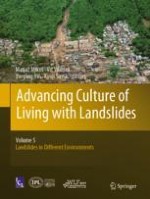2017 | OriginalPaper | Buchkapitel
Assessing Landslide Dams Evolution: A Methodology Review

verfasst von : Carlo Tacconi Stefanelli, Samuele Segoni, Nicola Casagli, Filippo Catani
Erschienen in: Advancing Culture of Living with Landslides
Aktivieren Sie unsere intelligente Suche, um passende Fachinhalte oder Patente zu finden.
Wählen Sie Textabschnitte aus um mit Künstlicher Intelligenz passenden Patente zu finden. powered by
Markieren Sie Textabschnitte, um KI-gestützt weitere passende Inhalte zu finden. powered by
